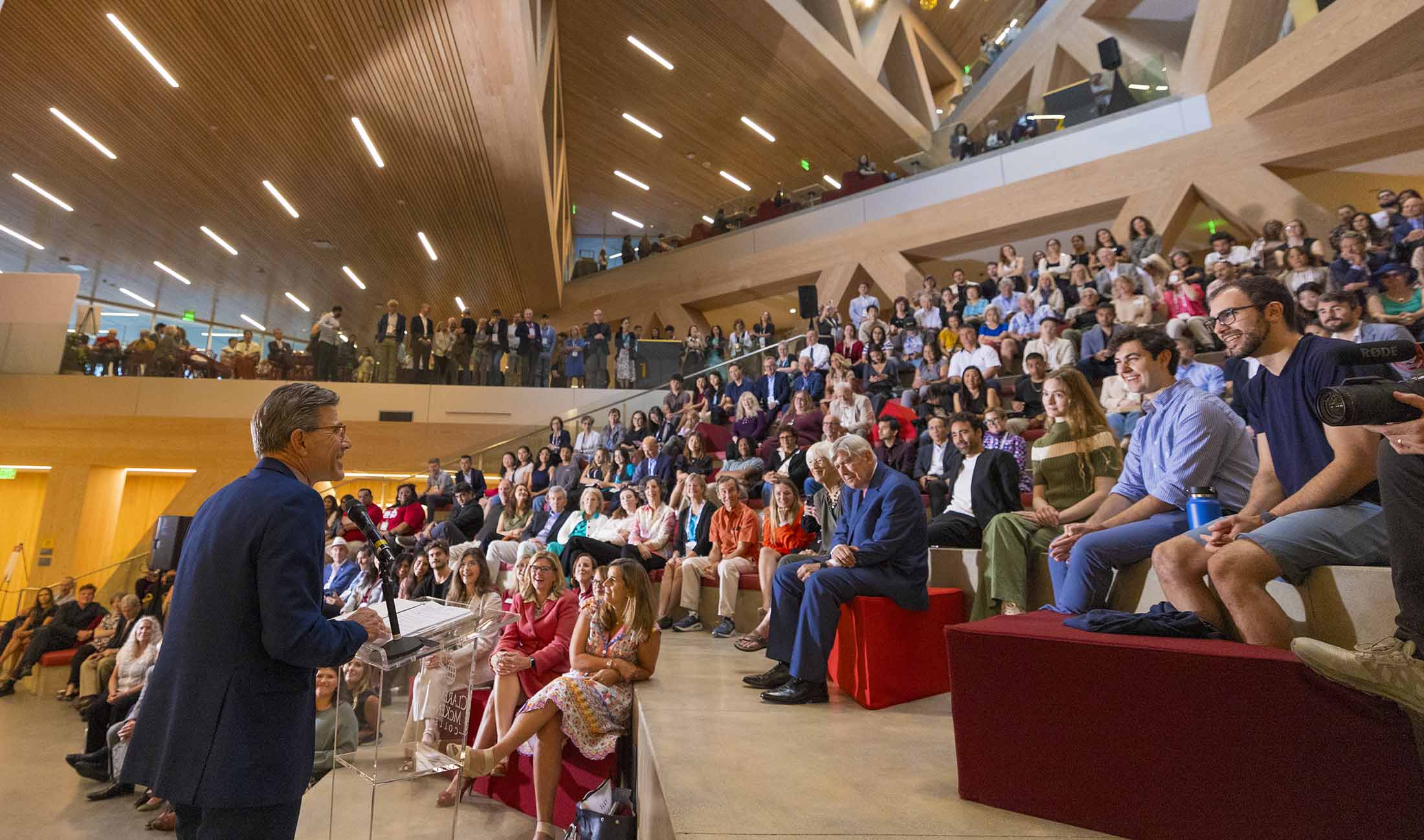Milestones
Timeline
Below is a brief summary of institutional achievements
during the CMC presidential tenure of Hiram E. Chodosh.
- 2013Hiram Chodosh, dean of the University of Utah S.J. Quinney College of Law and a scholar in comparative law and global justice reform, becomes CMC’s fifth president. His wife, Priya Junnar, joins CMC as Athenaeum director the following year.
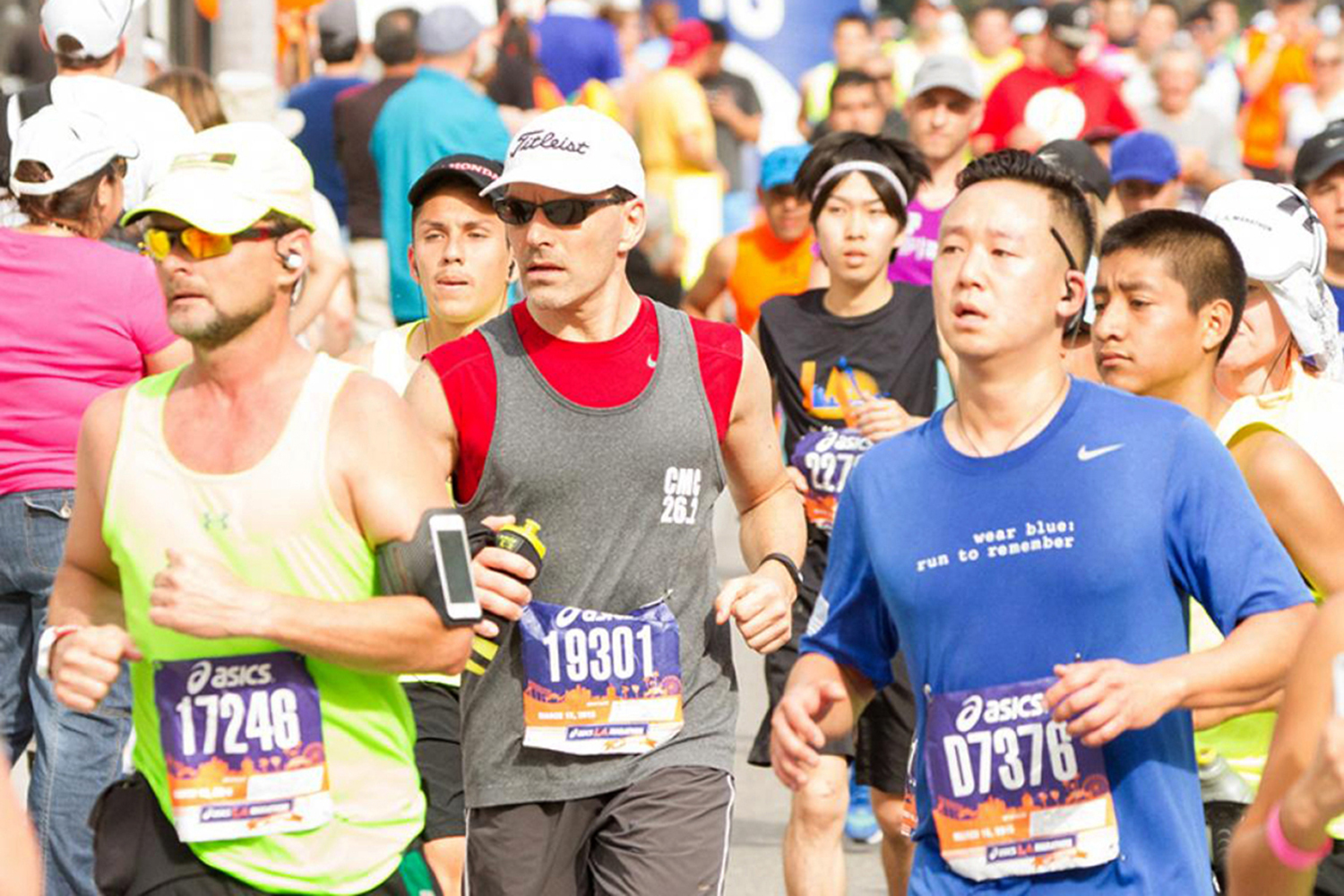 2014The Student Imperative launches, raising more than $200 million to support financial aid, provide focused research and internship experiences, and cultivate thoughtful and responsible leadership through residential and student life experiences. The Imperative lays the foundation for CMC’s Opportunity Strategy in the years to follow, which includes the creation of the Scholar Community program, the CARE Center, and the Kravis Opportunity Fund.
2014The Student Imperative launches, raising more than $200 million to support financial aid, provide focused research and internship experiences, and cultivate thoughtful and responsible leadership through residential and student life experiences. The Imperative lays the foundation for CMC’s Opportunity Strategy in the years to follow, which includes the creation of the Scholar Community program, the CARE Center, and the Kravis Opportunity Fund.- 2015
Through the Public Art Initiative, CMC’s collection is significantly enriched with several major installations across campus. The first notable piece is Mary Weatherford’s monumental From the Mountain to the Sea, a painted and neon tube abstract mural, located inside the Eggert Dining Room at the Marian Miner Cook Athenaeum. Added in subsequent years:
- Chris Burden’s Meet in the Middle (2016), a circular arrangement of streetlights and benches located in front of Roberts Pavilion. The sculpture was designed as part of Burden’s work with vintage street lamps.
- Ellsworth Kelly’s Totem (2017), one of the last works created by the celebrated sculptor, painter, and printmaker. The 40-foot white painted, stainless steel sculpture was installed at the site of the original Story House.
- Carol Bove’s four pieces near Collins Dining Hall—two created for CMC in 2019 and two previously exhibited to great acclaim. Four Loops, a particular visual standout, is a white tubular glyph with loops that appear to float in space.
- Jeppe Hein’s Modified Social Benches (2022), a group of whimsical, interactive bench sculptures outside Adams Hall. The piece marks the first group of Hein’s benches commissioned for a U.S. college campus.
- Pae White’s Qwalala (2023), a curving wall of over 1,500 solid glass bricks, each weighing nearly 40 pounds and hand-forged by Italian artists, in Mid-Quad. The installation, CMC’s latest, features two archways, a palette of 26 colors, and special illumination at night.
- Damián Ortega’s Magnetic Field (2025), a 3,000-pound sculpture comprised of 1,476 colorful glass spheres that hangs above the Atrium inside the Robert Day Sciences Center. Two additional pieces, H£Rñ§ñ0H§L by Anicka Yi and Jaume Plensa’s To JW Goethe (variant VIII), are on display in the building’s Quantum Library and the Agora.
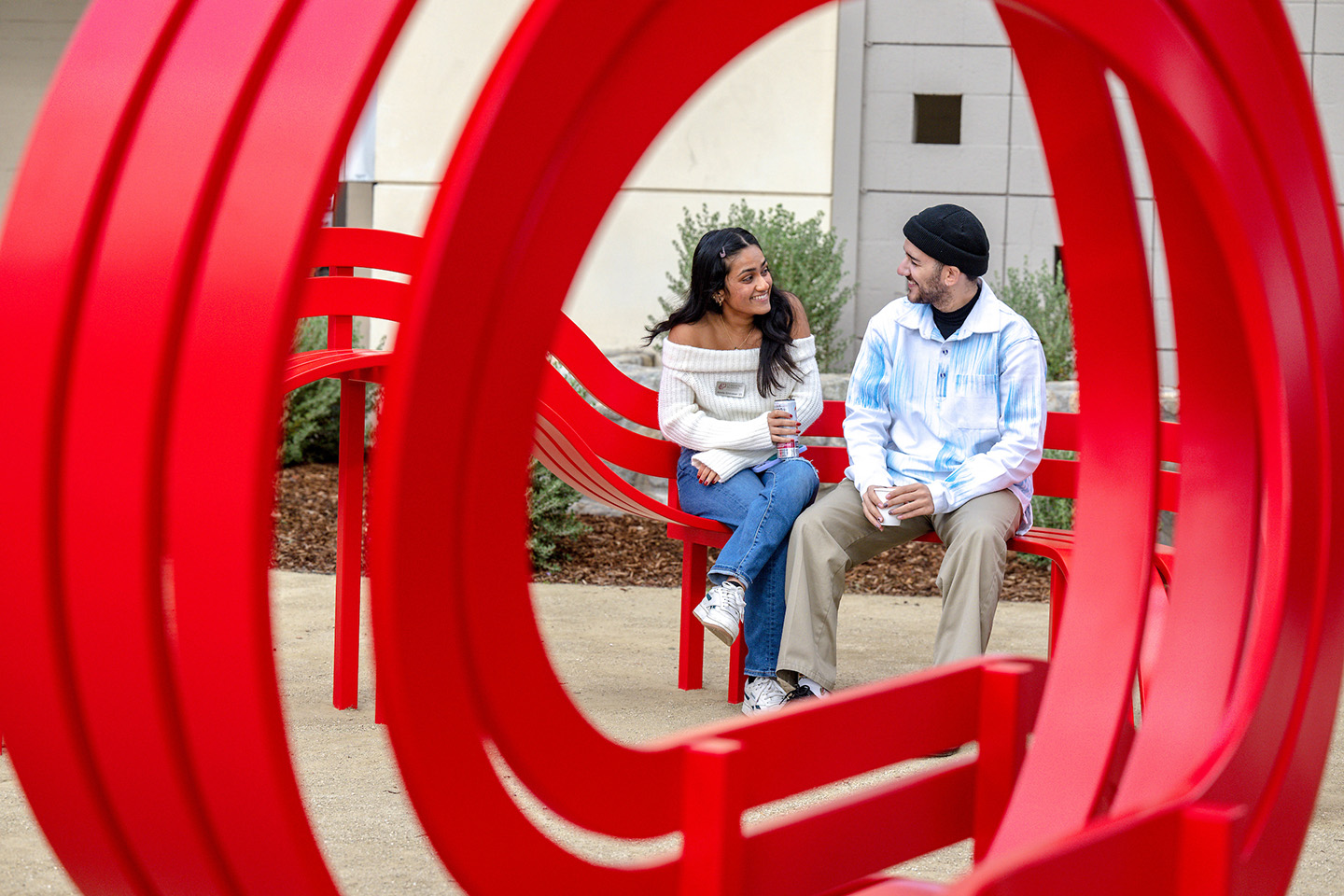
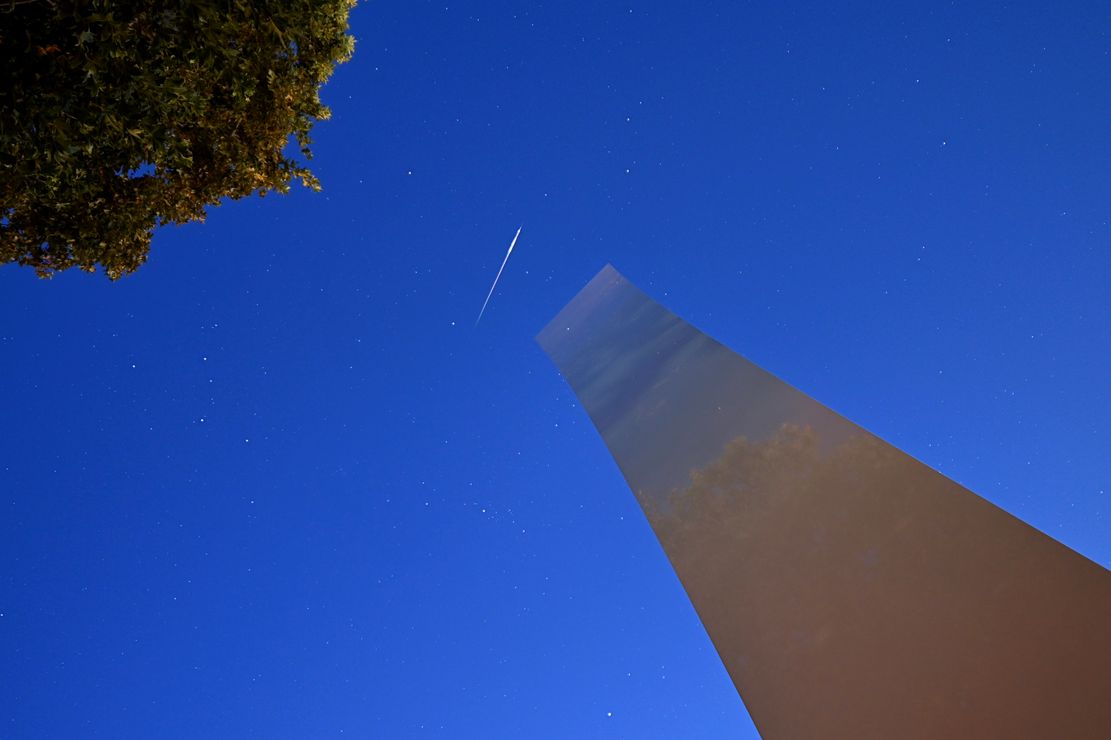
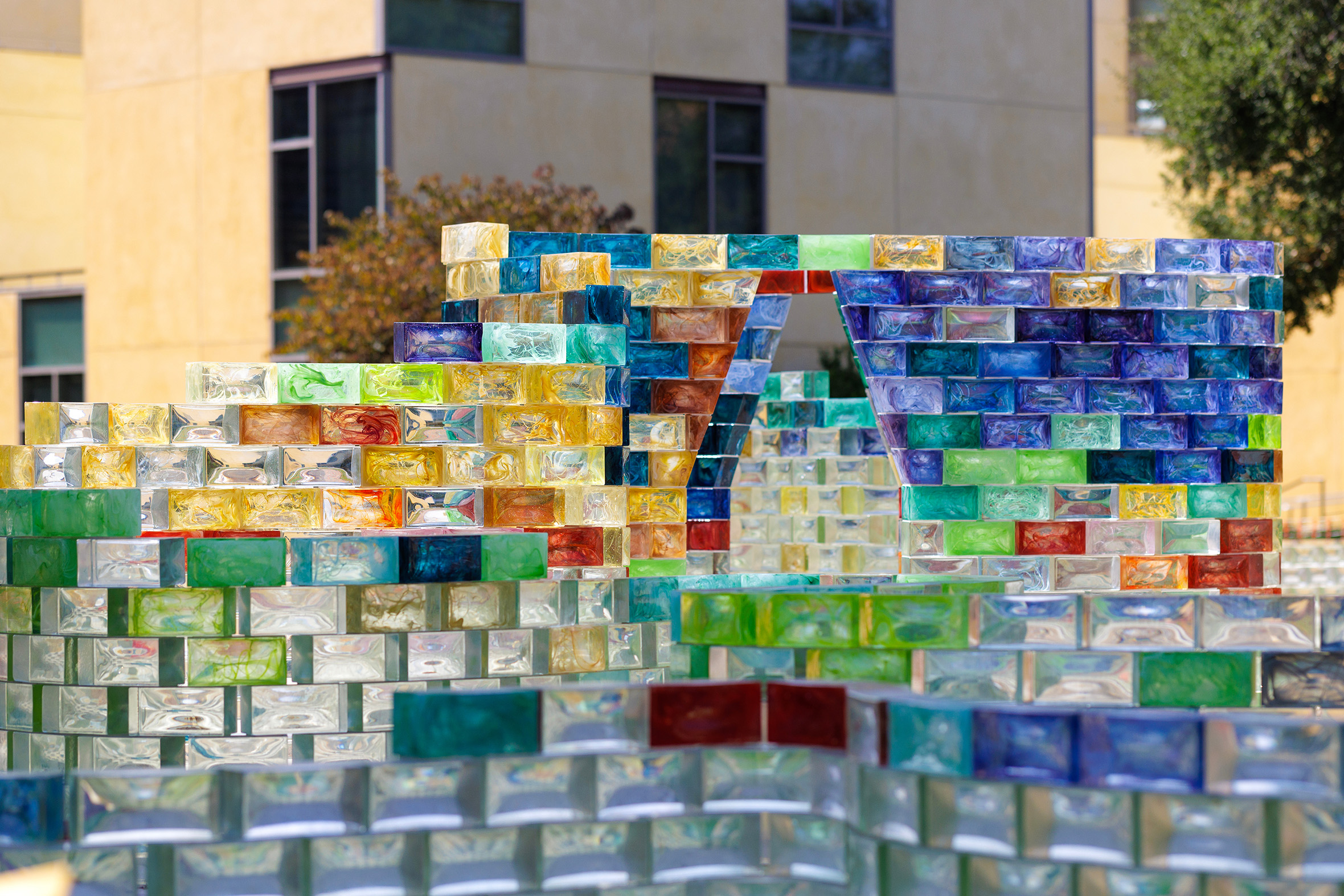 2016Roberts Pavilion, a state-of-the-art athletics and events center, opens—the culmination of more than two decades of planning to create a “beating heart” campus recreation space. At the dedication, namesake donor George Roberts ’66 P’93 marvels, “Just think about what this space does and what can be done with all of it in a short period of time. It has really surpassed, quite frankly, anything my imagination and desires were.”2016The CARE Center (Civility, Access, Resources, Expression) opens to promote programming, training, and workshops to help students learn through and across differences and experiences, identify across social barriers, and facilitate student leadership on issues of inclusion, collaboration, and empathy.
2016Roberts Pavilion, a state-of-the-art athletics and events center, opens—the culmination of more than two decades of planning to create a “beating heart” campus recreation space. At the dedication, namesake donor George Roberts ’66 P’93 marvels, “Just think about what this space does and what can be done with all of it in a short period of time. It has really surpassed, quite frankly, anything my imagination and desires were.”2016The CARE Center (Civility, Access, Resources, Expression) opens to promote programming, training, and workshops to help students learn through and across differences and experiences, identify across social barriers, and facilitate student leadership on issues of inclusion, collaboration, and empathy. - 2016Responding to campus needs, the Dean of Students initiates a series of new engagement and self-authorship strategies. Student-led groups like 1Gen, ¡Mi Gente!, Asian Pacific American Mentoring Program, and the College Programming Board help with peer-to-peer outreach and inclusive activities in the years ahead.
- 2016The student-led, Athenaeum-hosted Free Food for Thought podcast launches as a way to amplify the diverse voices of visiting academics, writers, policy makers, thought leaders, and alumni through a conversational series meant to feel like a “gathering around the head table at the Ath.”
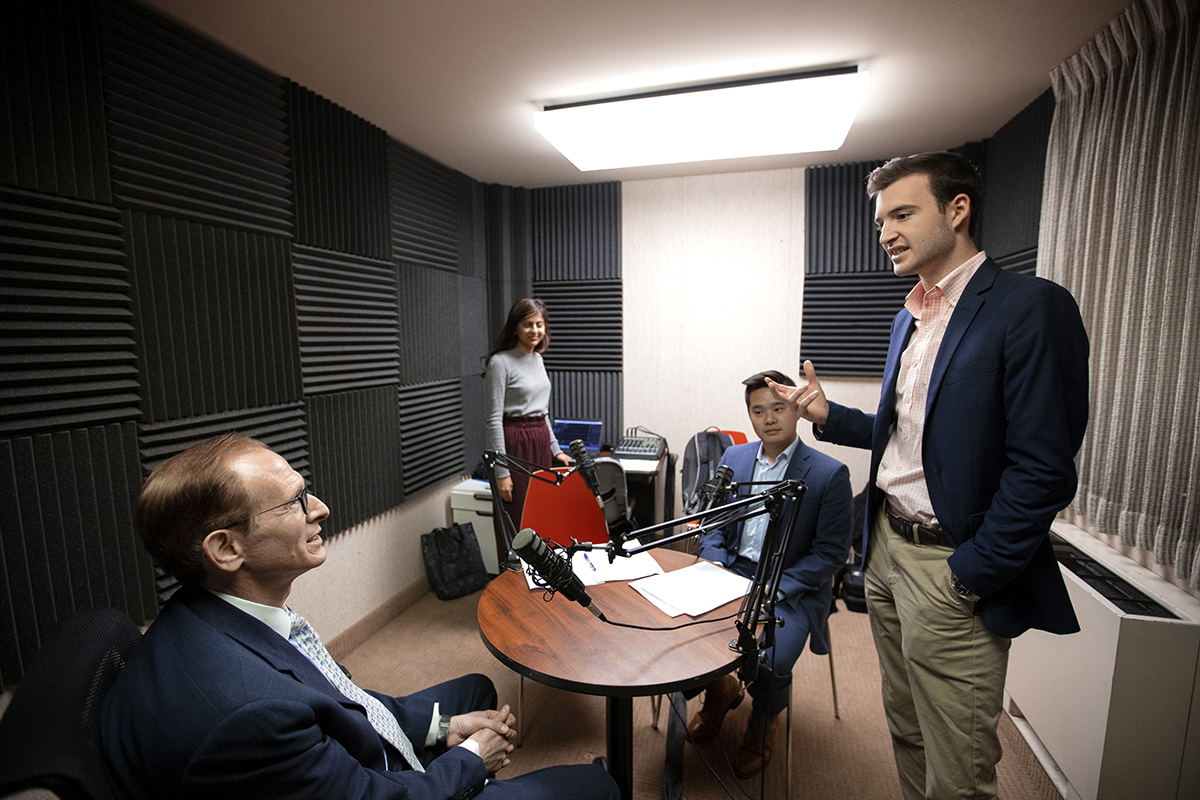
- 2016Faculty and student research achievements are displayed at the inaugural Community Celebration of CMC Faculty Publications and Grants. The event highlights research and scholarship from professors, who on average, produce more than 330 books, articles, creative works, and grant awards annually.2017The newly renovated Soll Center for Student Opportunity—named for Bruce Soll ’79 P’12 P’15 P’17 and the Soll family—opens as the expanded home for Career Services, Sponsored Internships and Experiences, and the Scholar Community program.
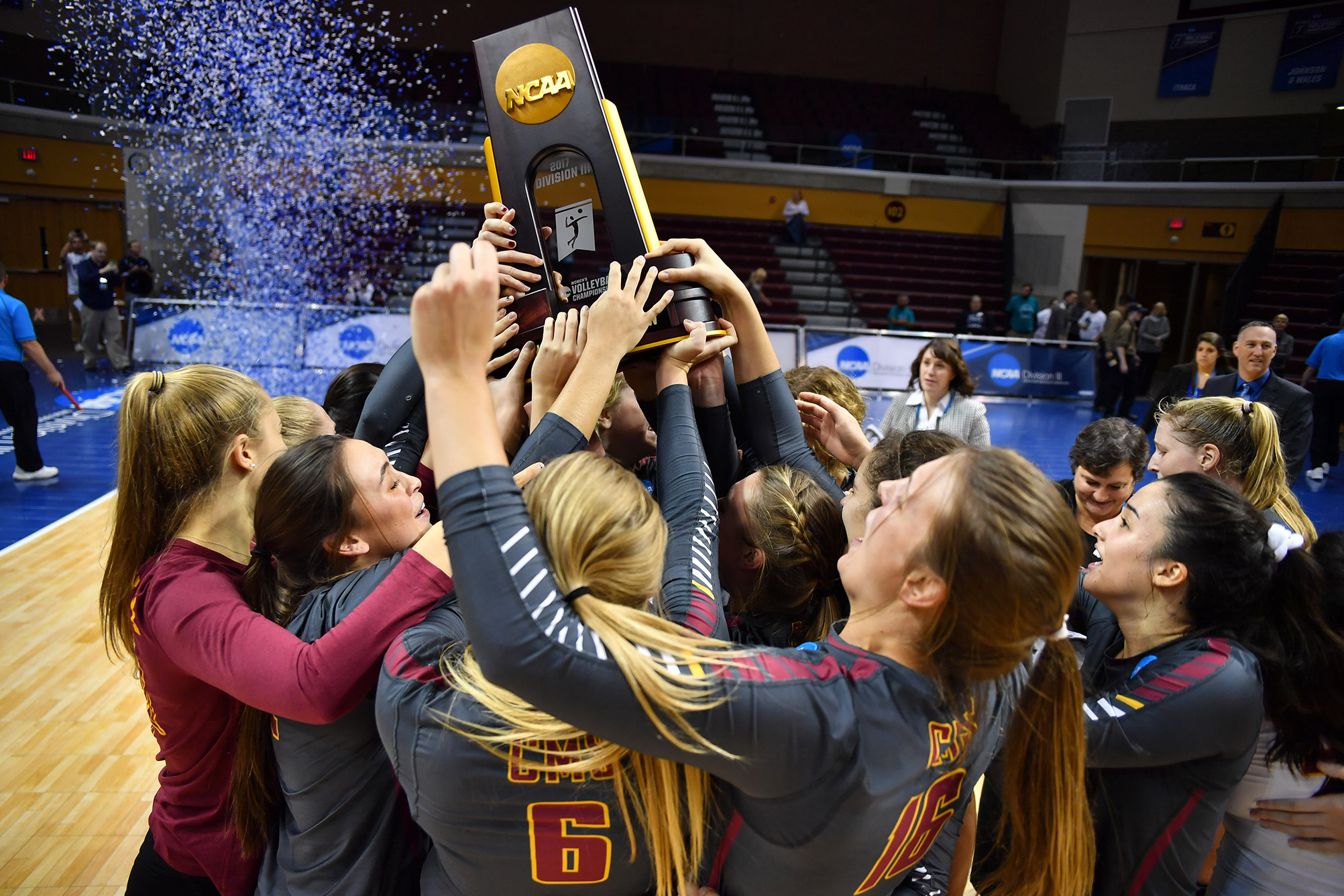 2017CMS women’s volleyball wins the NCAA Division III national championship, a first for women’s athletics. The victory also marks the start of the landmark “Year of the Athena,” which includes national titles in women’s tennis and golf (along with several individual titles) during the 2017-18 academic year.
2017CMS women’s volleyball wins the NCAA Division III national championship, a first for women’s athletics. The victory also marks the start of the landmark “Year of the Athena,” which includes national titles in women’s tennis and golf (along with several individual titles) during the 2017-18 academic year.- 2018The Kravis Opportunity Fund (KOF) is established by Marie-Josée and Henry Kravis ’67 to help students with summer internships and various costs beyond tuition, including kickoff grants for clothing, supplies, and technology; food support and application fee waivers; removal of home equity from the financial aid calculation; and travel and emergency funding. “There is so much more to the college experience than what you learn in a classroom, and it is a real honor for Marie-Josée and me to help promising students to be able to take full advantage of all that Claremont McKenna has to offer,” Kravis says of the gift.2018-19
In response to national and higher education challenges, CMC launches The Open Academy, a renewed set of educational and institutional commitments to freedom of expression, viewpoint diversity, and constructive dialogue. The initiative reinforces intellectual and social development to combat growing ideological threats to our national discourse.
For its work as “the college or university that has done the most to advance or sustain open inquiry, viewpoint diversity, and constructive disagreement either on its campus or nationally,” CMC receives an Institutional Excellence Award from the Heterodox Academy, a non-partisan, non-profit collaborative of more than 2,500 professors, administrators, and graduate students.
- 2018-20The Murty Sunak Quantitative and Computing Lab (QCL) opens as CMC’s centralized hub for integrating data and computer science into all fields of study and research. The QCL builds off CMC’s growth in computer science majors, a pathway created by a partnership with Harvey Mudd College a few years earlier, and the expansion of a data science major (fall 2020) to complement an already successful sequence. All are part of CMC’s strategic investment in the expansion of integrated sciences and computation.
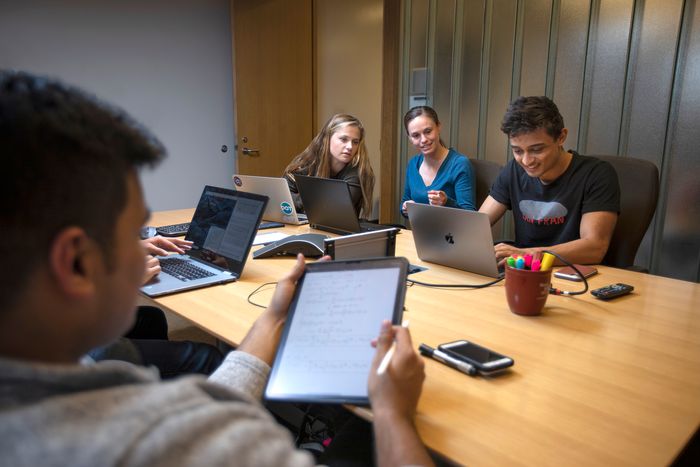
- 2020In response to persistent patterns of anti-Black racism and a summer of widespread national protests, CMC launches the Presidential Initiative on Anti-Racism and the Black Experience in America.
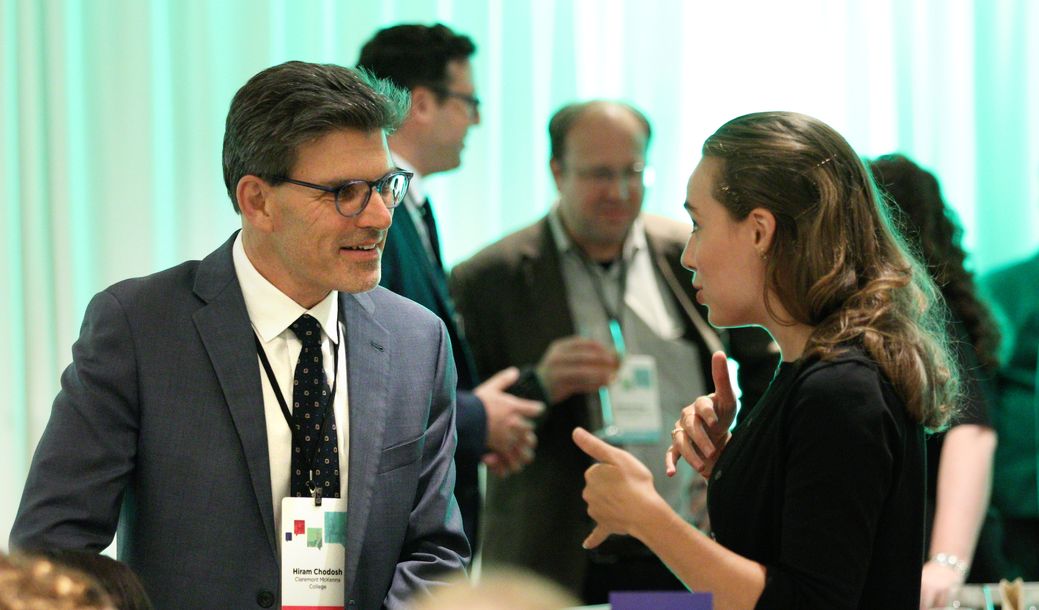 2020The American Talent Initiative recognizes CMC for its work as a national leader in building academic success and opportunity, particularly among first-generation students and Pell Grant recipients. Over the previous five years, CMC tripled the number of entering students who are the first in their family to attend college and doubled those whose family incomes are in the bottom quartile of the U.S. economy.2021Nearly 250 members of CMC’s Class of 2021 return to Parents Field for a modified Commencement ceremony following more than a year of displacement due to the COVID-19 pandemic. President Chodosh thanks the reunited class for its perseverance: “At CMC, we learn through and from these difficult, perplexing, promising moments. We draw on the liberal arts to ask questions before we act. We draw on our leadership experience to do more than just restore.”
2020The American Talent Initiative recognizes CMC for its work as a national leader in building academic success and opportunity, particularly among first-generation students and Pell Grant recipients. Over the previous five years, CMC tripled the number of entering students who are the first in their family to attend college and doubled those whose family incomes are in the bottom quartile of the U.S. economy.2021Nearly 250 members of CMC’s Class of 2021 return to Parents Field for a modified Commencement ceremony following more than a year of displacement due to the COVID-19 pandemic. President Chodosh thanks the reunited class for its perseverance: “At CMC, we learn through and from these difficult, perplexing, promising moments. We draw on the liberal arts to ask questions before we act. We draw on our leadership experience to do more than just restore.” - 2021The College offers a first look at the development of a next-generation integrated sciences program on the most important areas of discovery, computational methods, and intersections of policy, business, and ethics. The conceptual plan is a seminal investment and commitment that infuses science and computation deep into the fabric of the CMC mission and campus. The new program and center also will trigger a series of developments and improvements for an expanded east campus.
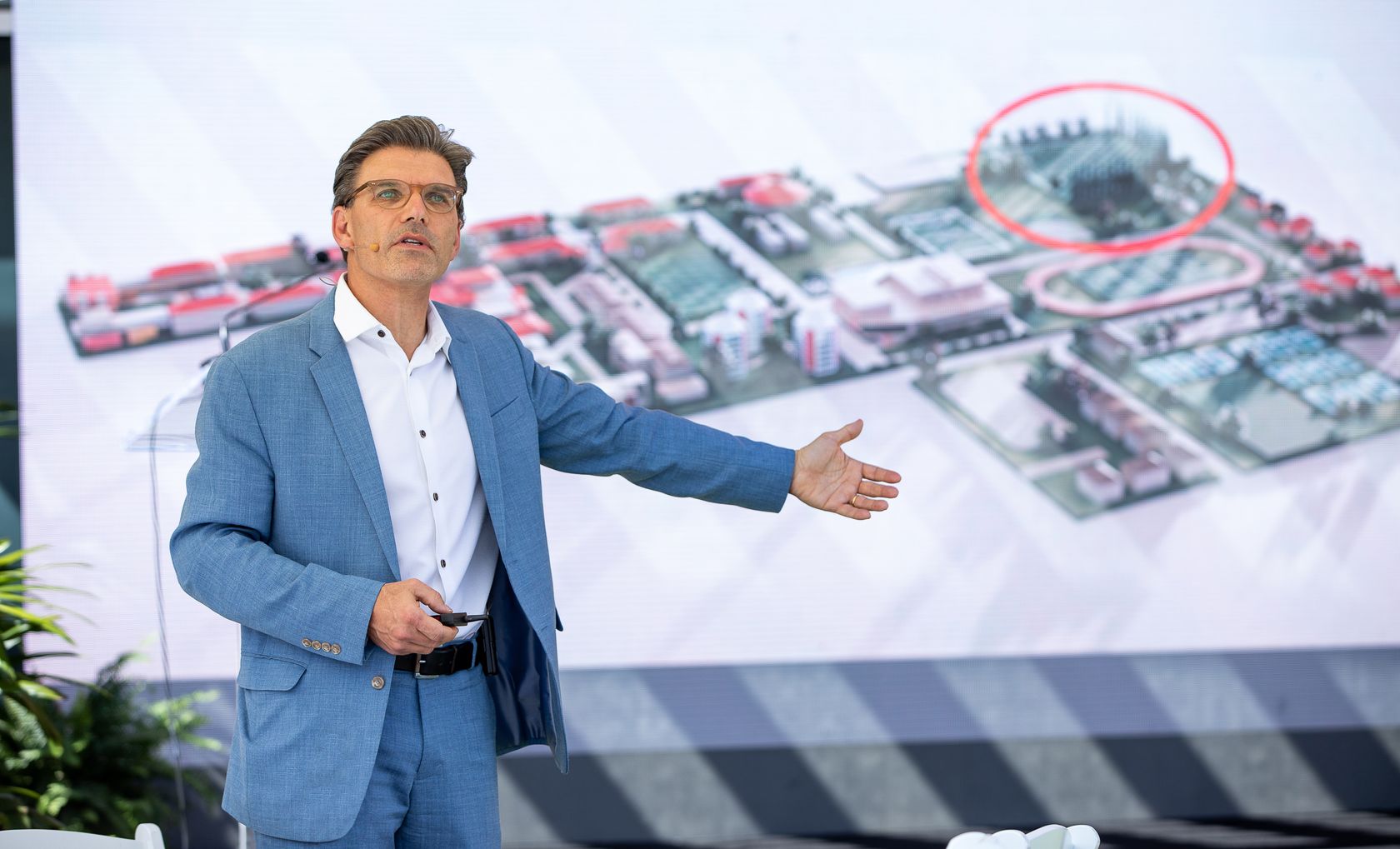
- 2022CMC breaks ground on the Robert Day Sciences Center (RDSC), a next-generation facility to house the College’s new Kravis Department of Integrated Sciences (KDIS). The program will focus on the most important areas of discovery, computational methods, and intersections of policy, business, and ethics. The groundbreaking of RDSC, set to open in 2025, is a seminal investment and commitment that infuses science and computation deep into the fabric of the CMC mission and campus.
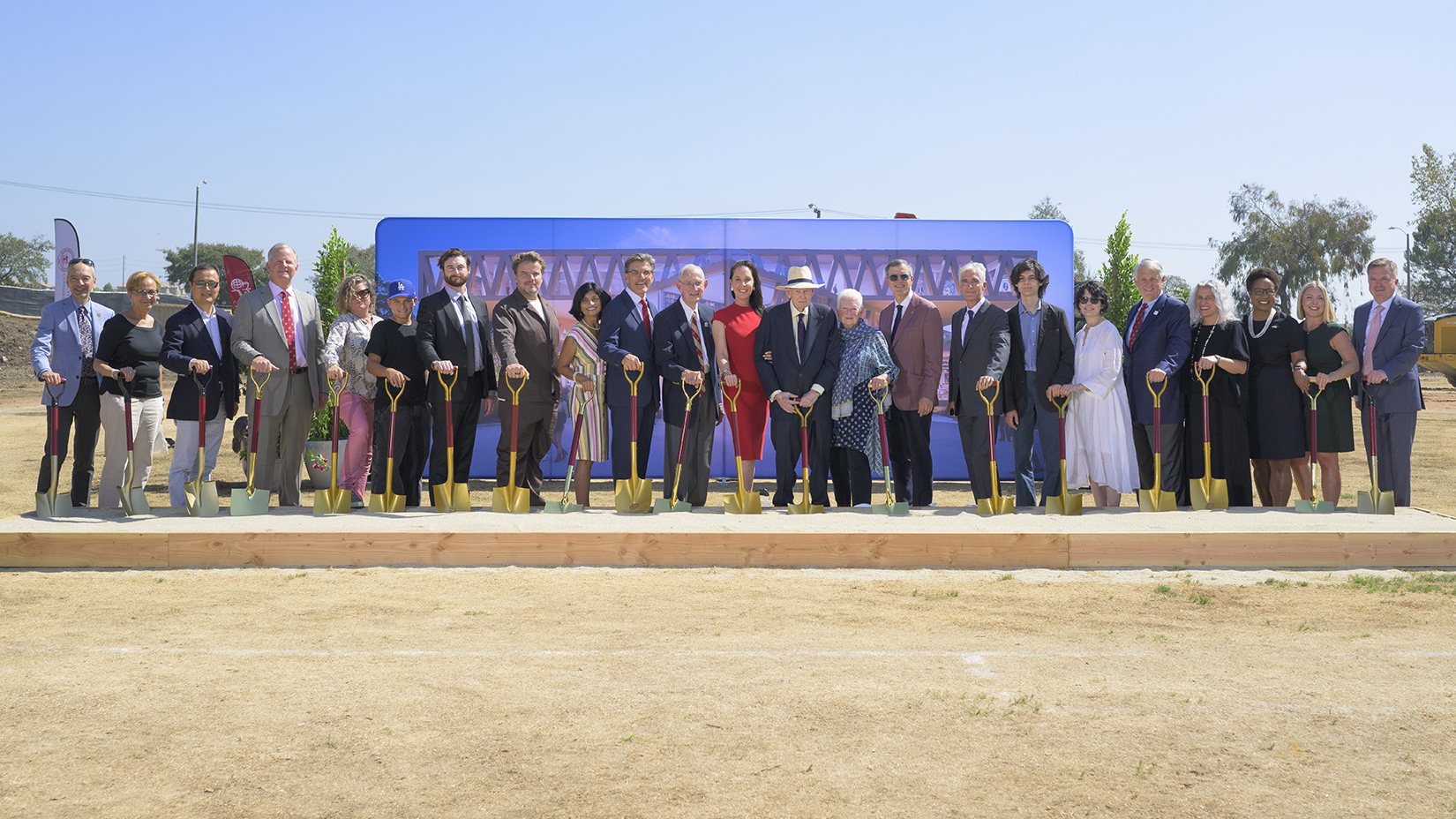
- 2022The new Robert Day Sciences Center (RDSC) and Kravis Department of Integrated Sciences (KDIS) trigger a series of developments and improvements for an expansion of the campus footprint to the east—The Roberts Campus. The commitment to campus growth is a fulfillment of CMC’s priorities for robust residential and co-curricular spaces, with an extension of the current North Mall to include academic and administration spaces, along with the creation of a new home for athletics and recreational facilities.
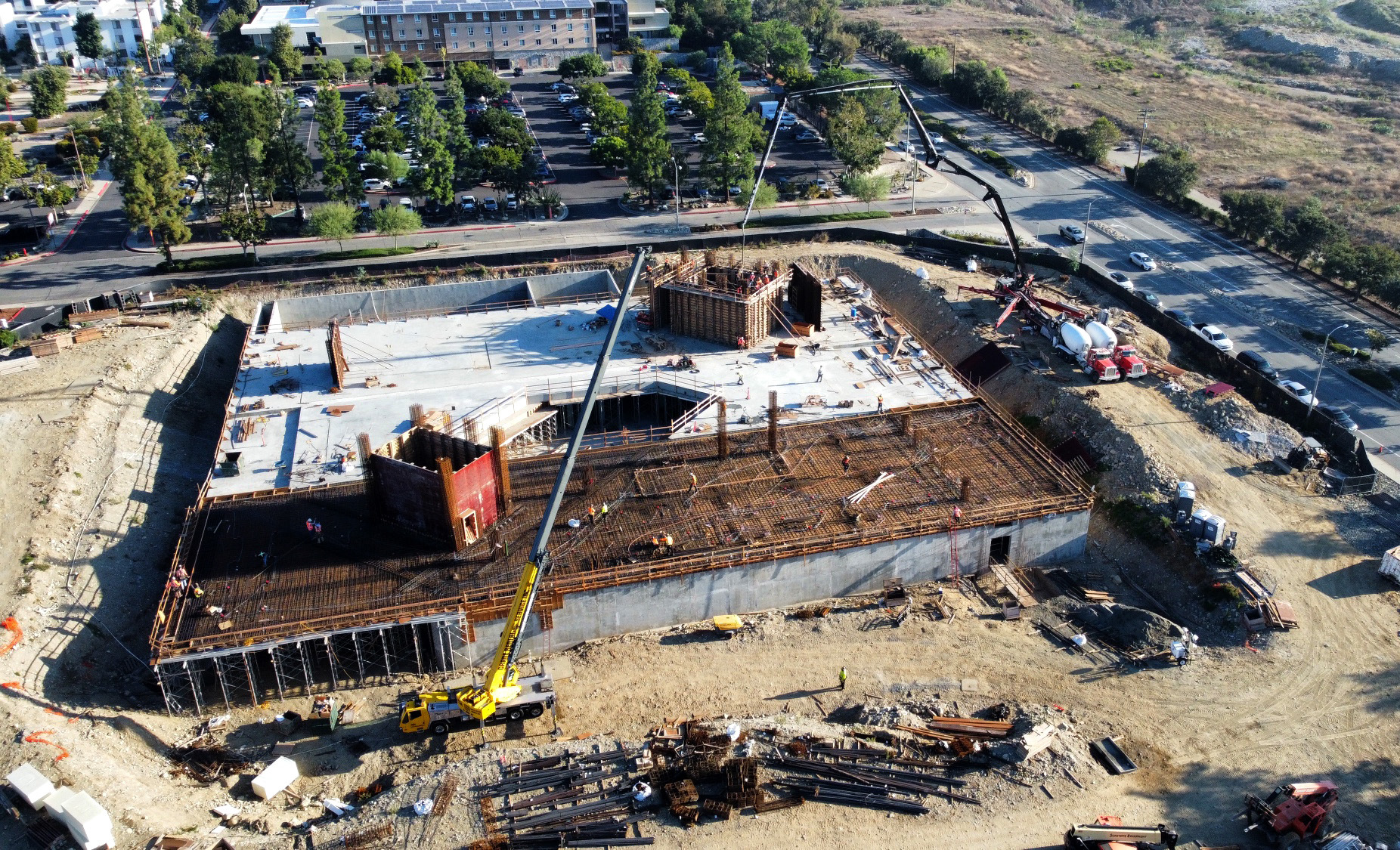
- 2022CMC celebrates the completion of its 75th Anniversary by ringing the iconic New York Stock Exchange closing bell. The community moment recognizes the thousands of CMC alumni who have led major enterprises, driven innovation, and made significant leadership contributions to the world.
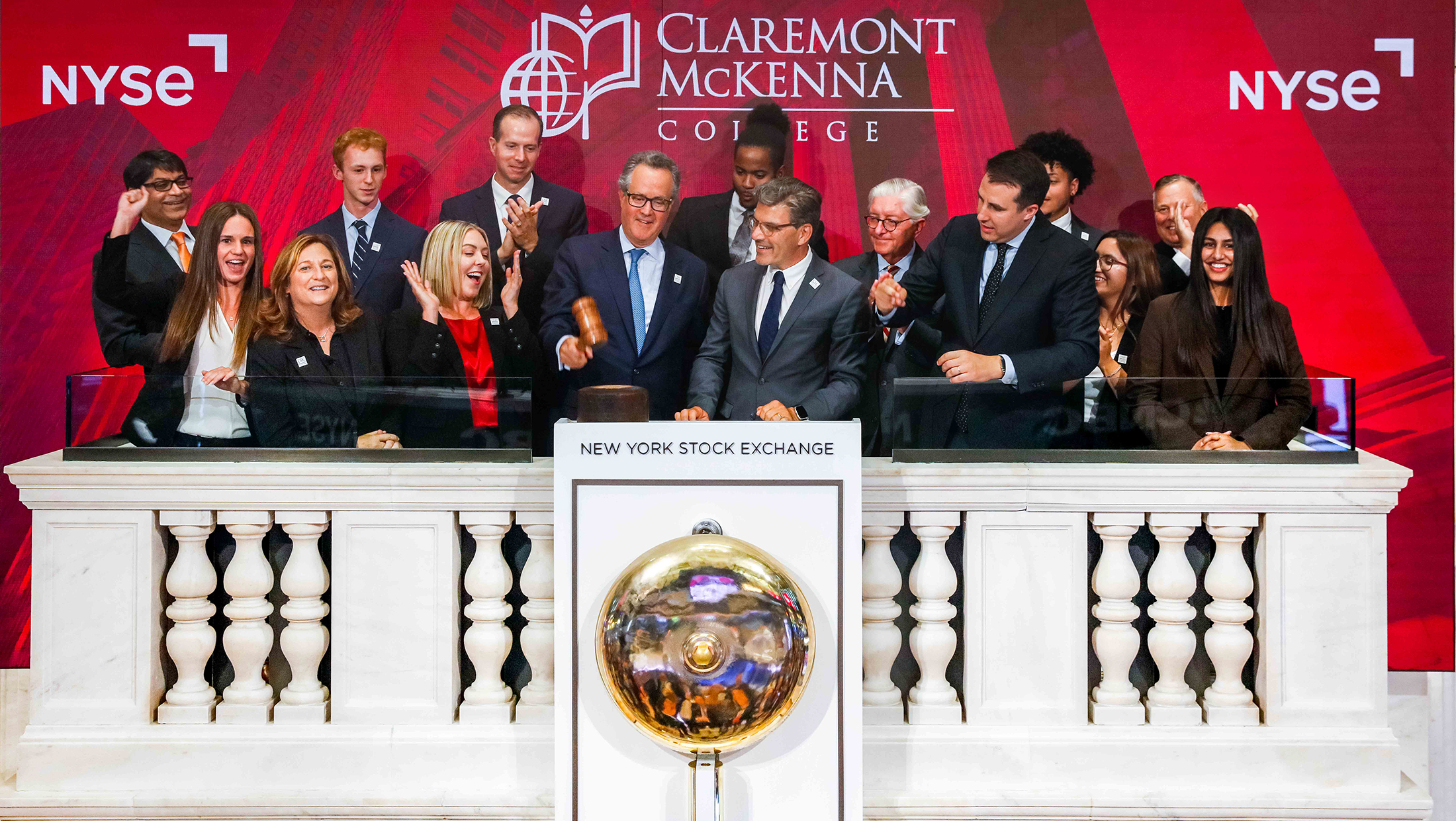
- 2023CMC raises nearly $1.1 billion in its Campaign for CMC: Responsible Leadership, breaking a fund-raising record among all liberal arts colleges. The most successful fund-raising endeavor in its 75-year-plus history, Claremont McKenna is the first liberal arts college to pass $1 billion in a campaign, raising $1,076,075,164 from more than 12,000 donors—over 65 percent of the alumni base. The campaign’s impact has shaped student experiences in the following core areas: Honoring CMC’s Leadership Mission; Expanding Student Opportunities; and Preparing Leaders Through Integrated Sciences.
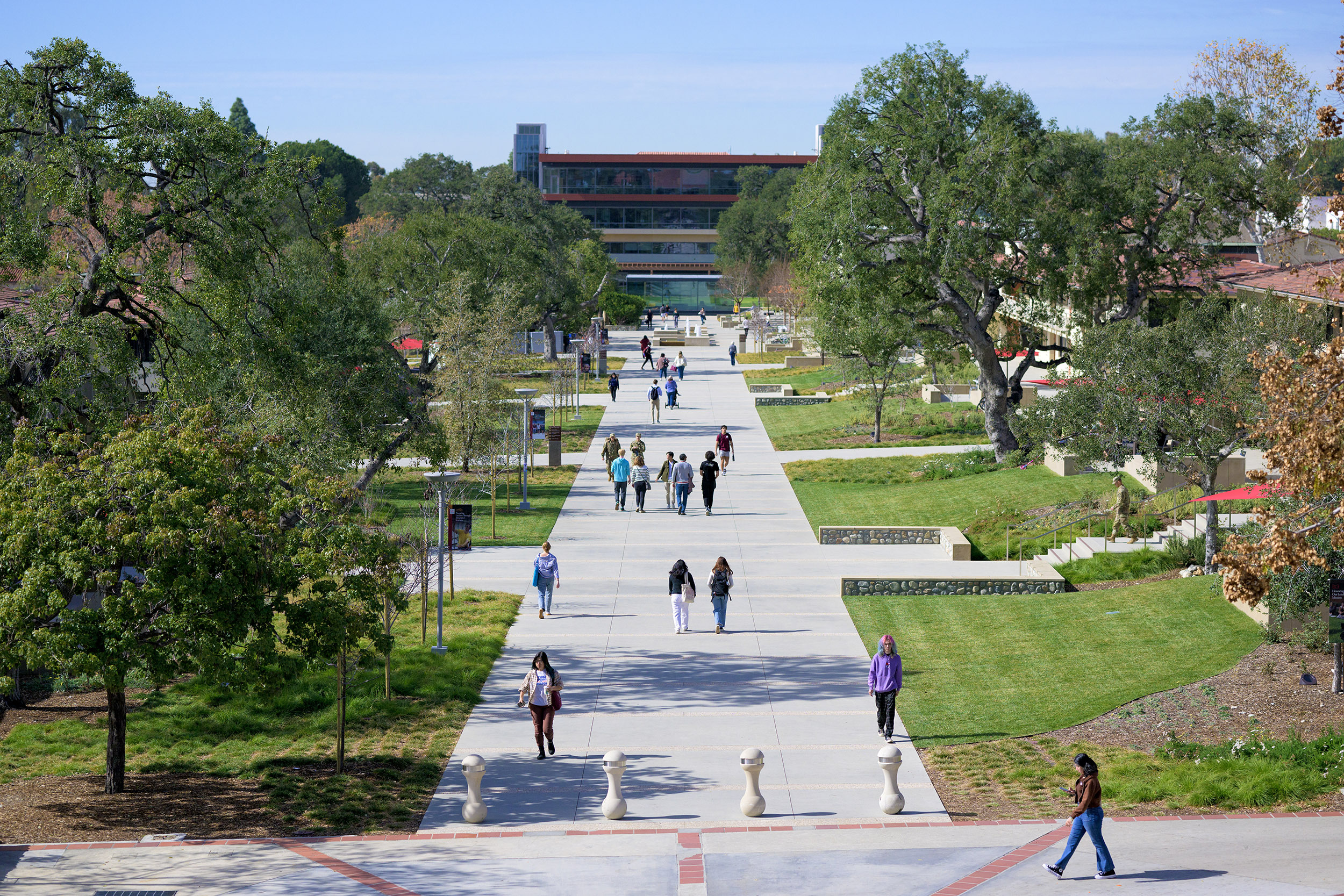
- 2024CMC is named one of the 25 inaugural recipients of the Carnegie Foundation Elective Classification for Leadership for Public Purpose, a formal recognition of the College’s campus-wide commitment to tackling complex societal issues and fostering a deeper understanding of leadership as a public good through initiatives such as The Open Academy.2025President Chodosh announces in March that he will conclude his CMC tenure at the end of the 2025-2026 academic year, his thirteenth as president. He cites “many trajectory-altering accomplishments over the past several years, cascading now and well into the future” that put the College in a “powerful” position “for new leadership to take CMC to the next level.”
- 2025The Robert Day Sciences Center is formally dedicated during a September ribbon cutting and community celebration. President Chodosh calls the opening of the iconic building (home to the Kravis Department of Integrated Sciences) a “Quantum Moment” for the College—the “launch pad” to “the CMC rocket now piercing the sky in increasingly steep trajectory.” Earlier in the day, President Chodosh and Priya Junnar receive a surprise honor with the naming of the Chodosh Social Stairs, the central gathering space inside the building.
